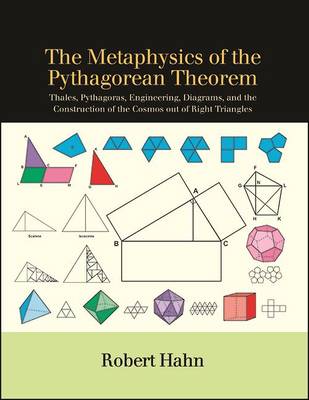
- Retrait gratuit dans votre magasin Club
- 7.000.000 titres dans notre catalogue
- Payer en toute sécurité
- Toujours un magasin près de chez vous
- Retrait gratuit dans votre magasin Club
- 7.000.0000 titres dans notre catalogue
- Payer en toute sécurité
- Toujours un magasin près de chez vous
The Metaphysics of the Pythagorean Theorem
Thales, Pythagoras, Engineering, Diagrams, and the Construction of the Cosmos Out of Right Triangles
Robert HahnDescription
Explores Thales's speculative philosophy through a study of geometrical diagrams.
Bringing together geometry and philosophy, this book undertakes a strikingly original study of the origins and significance of the Pythagorean theorem. Thales, whom Aristotle called the first philosopher and who was an older contemporary of Pythagoras, posited the principle of a unity from which all things come, and back into which they return upon dissolution. He held that all appearances are only alterations of this basic unity and there can be no change in the cosmos. Such an account requires some fundamental geometric figure out of which appearances are structured. Robert Hahn argues that Thales came to the conclusion that it was the right triangle: by recombination and repackaging, all alterations can be explained from that figure. This idea is central to what the discovery of the Pythagorean theorem could have meant to Thales and Pythagoras in the sixth century BCE. With more than two hundred illustrations and figures, Hahn provides a series of geometric proofs for this lost narrative, tracing it from Thales to Pythagoras and the Pythagoreans who followed, and then finally to Plato's Timaeus. Uncovering the philosophical motivation behind the discovery of the theorem, Hahn's book will enrich the study of ancient philosophy and mathematics alike.
Spécifications
Parties prenantes
- Auteur(s) :
- Editeur:
Contenu
- Nombre de pages :
- 300
- Langue:
- Anglais
- Collection :
Caractéristiques
- EAN:
- 9781438464909
- Date de parution :
- 02-01-18
- Format:
- Livre broché
- Format numérique:
- Trade paperback (VS)
- Dimensions :
- 213 mm x 277 mm
- Poids :
- 816 g

Les avis
Nous publions uniquement les avis qui respectent les conditions requises. Consultez nos conditions pour les avis.






